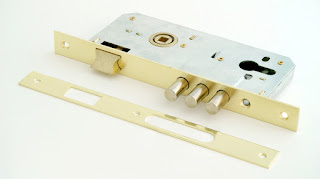Things to Consider While choosing the Right Door Closer
Choosing the right door closer to your door is extremely important. Because there are plenty of choices to choose from when purchasing your door closer supply, getting the right closer to fit your door needs, can be challenging.
So we’ve put together inhere a short guide, to help you make the right choice for your door closer.
1. CONSIDERING THE TYPE OF DOOR
Is the door internal or external? Is it opening outward or inward?
If the doors are External, they have not fired doors, and these doors do not need an electromagnetic door closer.
For doors that are opening inward and outward, some closers can be model-specific also angle brackets may often be required.
2. CONSIDERING THE AVAILABLE SPACE
Measure the height and width of the framing and the door.
· The power size of the closer is Depending on the door weight. For
optimal performance choose a closer with a larger power size for heavier
doors.
· A concealed door closer may be required when dealing with extremely narrow door frames.
Another important issue to consider is the user type. For i.e. if the
door is being used mostly by elderly and less abled peoples, you may
consider a more delayed close to allow them ample time to pass through
the doors.
Generally, Hospitals, schools, and shopping centers are considered high
usage doors, due to the high volume and frequent usage, and they would
require Door Closers that are designed for the High category.
3. SIZING THE FORCE REQUIRED FOR DOOR CLOSER
The heavier and larger the door is, the more door force will be required for the door closer.
Many door closers come with options of adjustable strengths to fit the size/weight of various door types.
Note! In a very small room, it may be required additional force to help overcome the air pressure. Also, for an external door, a higher power
size may also be required in order to help reduce the door slamming
you'll need a closer with latching action.
4. ACCESSIBILITY AND FIRE DOOR CODE REQUIREMENTS
There are many standards and code requirements for door closers.
As Accessibility, fire, and life-safety requirements, all have an
effect on door closers, but these requirements can be easily met when
the correct product is selected and properly installed
Accessibility:
In order to conform to the Accessibility code, the national
accessibility standards require that door closers be adjusted in such
measure that it takes at least 5 seconds for the door to move from an open position of 90 degrees to 12 degrees from the latch.
According to the national standards it is not required to have the
"delayed action" feature, which holds the door open for a minute or two
before beginning the closing cycle, however for certain types of rooms
that can be helpful, such rooms as a storage or tub room.
Interior doors that are not fire doors must have the ability to be opened with a maximum of 5 pounds of force. This limitation applies to
the force needed for the door to open, but not the force required to
release the latch.
Fire doors are limited to openings at a minimum force allowed by the
Authority Having Jurisdiction (AHJ). Typically, for interior doors, the
NFPA 80 recommends a size 3 closer. Exterior doors are not specified by the national accessibility standards but may be addressed by state or local requirements for accessibility. the opening force for accessible,
non-fire-rated, swinging doors is limited by The International Building
Code (IBC) to 5 pounds, other egress doors are limited to 15 pounds to
release the latch, 30 pounds for setting the door in motion, and 15
pounds for opening the door to the fully-open position.
Fire doors:
Fire-rated doors must be closed at the time of a fire that is certainly
one of the cardinal rules. But there are many different ways to holding a
door open.
A floor or wall-mounted magnetic holder may be used with a separate
mechanical closer if the holder releases upon detection of fire
alarm/smoke.
A closer may contain an integral smoke detector or an integral electronic holder to release upon fire alarm.
Retrofit applications can have a battery-operated holder in conjunction
with a separate mechanical closer with an integral smoke detector maybe
used.
A closing device must be installed on every fire door, According to NFPA
80 – Standards for Fire Doors and Other Opening Protective's. however,
there are some exceptions to this requirement, i.e. doors communicating
between hotel rooms and the inactive leaf of pairs leading to rooms not
normally occupied by humans, such as mechanical rooms (were acceptable
to the AHJ).
Installation of Closers must be securely attached through through-bolts or
steel screws and the closer must be adjusted so the door latches each time it closes.
About Park Avenue Locks
Choosing the right door lock for your business or home can be stressful. At Park Avenue locks, we strive to make it as easy as possible by breaking down your options and offering a wide selection to fit your style. Some of our best-selling products include yale locksets, lcn door closers, hes electric strikes,
and many more. Get the best door lock brands all in one location for affordable pricing, whether you’re a custom home builder or a homeowner when you shop with us. For all your door locks and accessories, head over to Park Avenue Locks. We offer both residential and commercial door locks at competitive prices and offer free shipping on orders over $49.
Explore the best door locks at https://www.parkavenuelocks.com/
Original Source: https://bit.ly/2LAfsF1





Comments
Post a Comment